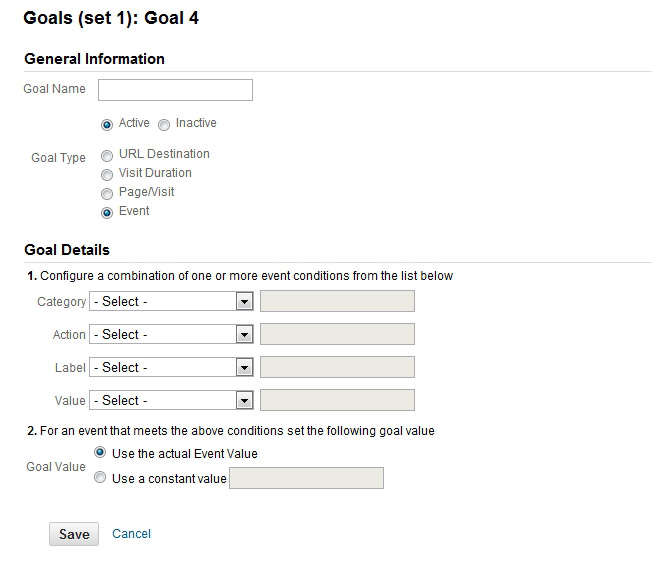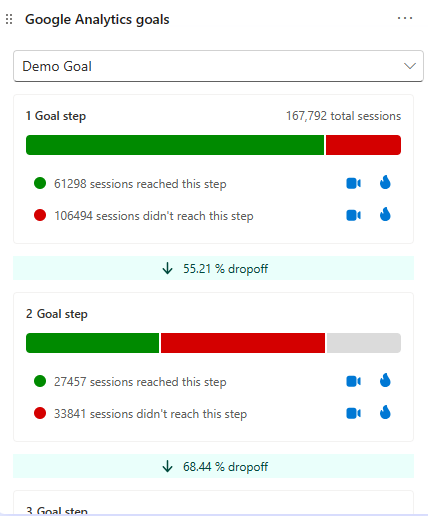Exploring What Data Is Google Analytics Goals Unable to Track
Wiki Article
Discover the Limitations of Google Analytics Goals: Revealing the Data Kind That Remain Untrackable
As organizations significantly depend on data-driven decision-making, understanding the limitations of devices like Google Analytics ends up being paramount. While Google Analytics Goals offer useful insights right into customer interactions, there exist information types that avoid monitoring, positioning obstacles to a detailed understanding of user habits. These untrackable information types increase inquiries about the precision and efficiency of the analytics information that organizations heavily rely upon for their digital methods. Interested to discover the concealed blind areas in your information analysis process?Insufficient Customer Journey Tracking
Incomplete individual journey monitoring within Google Analytics can hinder the ability to precisely assess user behavior. When the customer trip is not fully tracked, there are voids in the information that protect against a comprehensive understanding of how individuals communicate with a web site. This lack of understanding can cause missed out on possibilities for optimization and enhancements to the individual experience.One typical concern with incomplete customer journey tracking is the failure to see the full course that individuals take previously finishing an objective or leaving the website. Without this information, it is testing to identify where individuals might be coming across barriers or friction points that stop them from transforming. Additionally, insufficient tracking can cover the effect of certain marketing efforts or website changes on individual habits.
To address this limitation, it is critical to set up proper tracking devices within Google Analytics to capture the entire user trip. This may involve establishing up event tracking, goal funnels, or utilizing tools like Google Tag Supervisor to make certain that no vital interactions go unrecorded. By getting a detailed view of the customer journey, internet site proprietors can make more educated decisions to improve customer engagement and drive conversions.
Acknowledgment Obstacles
Navigating via attribution challenges in Google Analytics needs a complete understanding of just how different touchpoints contribute to the total conversion process. Attribution challenges arise from the intricacy of modern consumer trips, where individuals engage with numerous channels before converting.One common acknowledgment challenge is the difficulty in connecting conversions to the appropriate resource, particularly in situations where individuals interact with several networks before converting. Additionally, cross-device monitoring positions an additional acknowledgment challenge, as customers usually switch in between gadgets throughout their journey, making it testing to track their communications flawlessly.
Offline Conversions
Offered the obstacles associated with attributing conversions accurately in online channels, the measurement of offline conversions offers a substantial chance for online marketers seeking a much more extensive understanding of their clients' journey. Offline conversions describe actions that consumers absorb the real world, such as making purchases in brick-and-mortar shops or over the phone, going to events, or engaging with published products - what data is google analytics goals unable to track. These conversions are critical for services that run both online and offline, as they supply useful understandings right into the performance of marketing projects throughout numerous touchpointsTracking offline conversions typically positioned a substantial obstacle for marketers, as it was challenging to connect these actions back to informative post certain on-line interactions properly. Nevertheless, with innovations in innovation, such as the assimilation of CRM systems, special identifiers, and promo code codes, companies can now link the space between online and offline data to acquire a much more all natural sight of client actions. By properly gauging offline conversions, marketers can optimize their approaches, allot resources more successfully, and inevitably boost the total consumer experience.
Cross-Device Tracking
Cross-device tracking plays a crucial role in comprehending the interconnected nature of consumers' digital communications across multiple devices. In today's omnichannel globe, where customers seamlessly switch over between desktops, smartphones, and tablet computers, tracking their actions across these gadgets is essential for marketing experts to acquire a thorough view of their client journey.
Moreover, personal privacy issues and policies such as GDPR and CCPA have better complex cross-device monitoring. With customers requiring even more control over their information and enhanced constraints on monitoring innovations, online marketers have to find privacy-compliant and cutting-edge ways to connect individual interactions across tools.
Dynamic Material Involvement
Understanding user involvement with dynamic web content click here to find out more is critical in enhancing digital advertising approaches for enhanced audience interaction. Dynamic web content refers to internet site elements that change based on customer habits, preferences, or various other aspects, providing an individualized experience. Tracking individual interactions with vibrant web content poses challenges for traditional analytics tools like Google Analytics.While Google Analytics can track standard interactions like clicks and page views, it may battle to capture even more nuanced involvements within dynamic content. what data is google analytics goals unable to track. Metrics such as time spent on certain dynamic elements, hover actions, or interactions within pop-ups are commonly not easily quantifiable using conventional monitoring approaches. This limitation impedes marketing experts' capability to totally comprehend exactly how customers are engaging with dynamic web content and tailor their approaches accordingly

Verdict
Finally, Google Analytics objectives have constraints in tracking incomplete user journeys, attributing conversions Learn More Here properly, catching offline conversions, tracking cross-device communications, and gauging dynamic material engagement. These restraints highlight the relevance of exploring extra monitoring methods and devices to gain a more extensive understanding of user behavior and conversions past what Google Analytics can give.While Google Analytics Goals offer valuable insights right into customer communications, there exist information types that thwart monitoring, positioning obstacles to a thorough understanding of user behavior.Incomplete individual journey tracking within Google Analytics can prevent the capability to accurately assess individual actions. When the user trip is not totally tracked, there are gaps in the data that prevent a detailed understanding of exactly how customers interact with an internet site.One usual issue with insufficient user journey monitoring is the lack of ability to see the full path that individuals take before finishing a goal or leaving the site. By getting an extensive sight of the individual journey, site owners can make more enlightened choices to enhance user engagement and drive conversions.
Report this wiki page